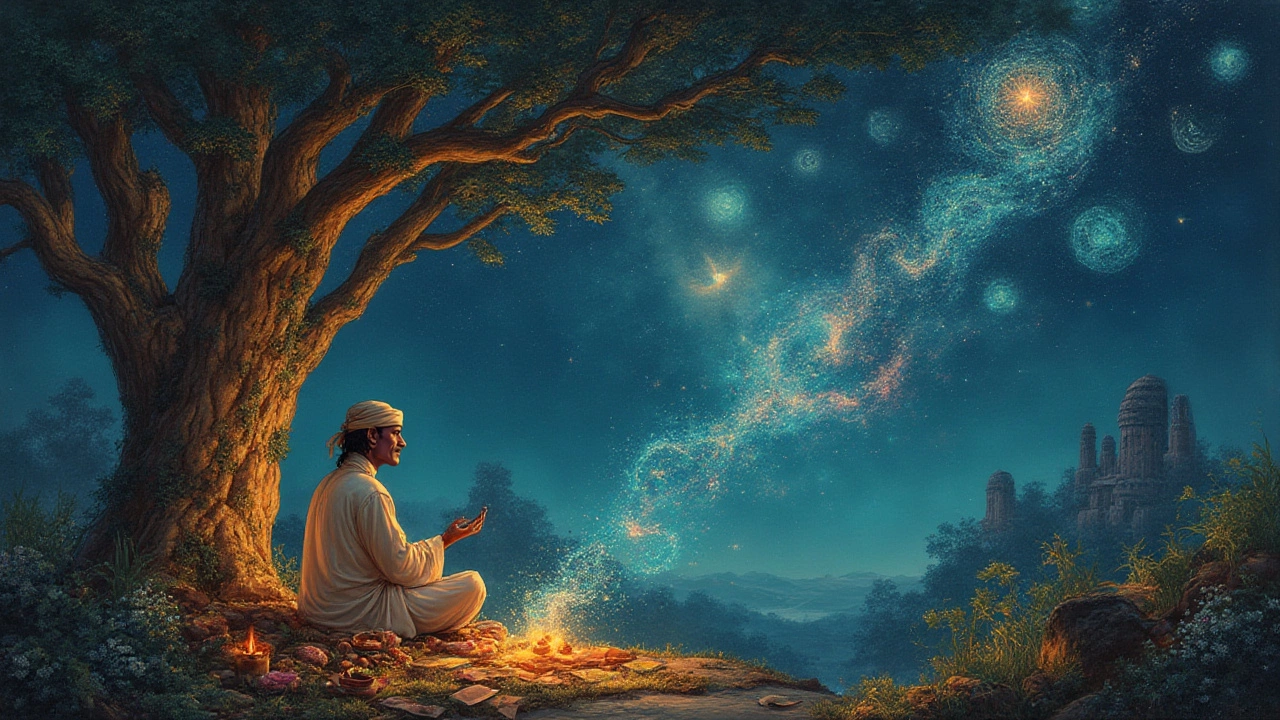
Indian Philosophy of Dreams: Ancient Wisdom, Myths, and Modern Interpretations
Dive into Indian philosophy of dreams—how ancient texts, spiritual practices, and cultural beliefs explain what dreams mean, why we have them, and how to use them.
Ever woken up with a vivid scene that felt more like a movie than a random brain flick? In Indian culture, dreams are more than stray thoughts – they’re often seen as messages, warnings, or glimpses of the future. This guide breaks down the most common symbols, shows you how to read the signs, and gives practical tips you can use tonight.
First off, don’t stress if your dream seems bizarre. Indian dream lore treats every detail as a clue, no matter how odd. The key is to connect the symbol to your life, your emotions, and sometimes even the season you’re living in.
Water – Flowing rivers, rain, or the ocean usually point to emotions. Calm water suggests peace, while turbulent waves hint at unsettled feelings or upcoming challenges. If you see a holy river like the Ganga, it often means purification or a fresh start.
Snakes – Snakes can be tricky. In many Indian stories, they represent hidden threats or transformation. A friendly snake might signal hidden knowledge, whereas a biting one warns you to watch out for deceit.
Animals – Each animal carries its own vibe. Cows symbolize prosperity and motherly care; seeing a cow could indicate financial stability. Elephants suggest strength and wisdom, while a crow often means you need to listen to a message you’ve ignored.
Flying – Taking off in a dream is a sign of ambition. If you’re soaring freely, it’s a green light for new projects. Struggling to fly, however, may signal self‑doubt.
Houses – The condition of the house mirrors your inner world. A tidy home reflects calm, while a crumbling house hints at insecurity or a need to rebuild foundations.
Start a simple dream journal. Write down the main scenes, feelings, and any colors that stand out. Even a quick note right after waking helps capture details before they fade.
Next, link symbols to personal experiences. If you dreamed of a bustling market, ask yourself: Are you currently juggling many decisions? The context matters more than the textbook meaning.
Use the “three‑question” rule: What was happening? How did I feel? What’s changing in my life right now? Answering these creates a map that connects the subconscious image to real‑world events.
When you hit a symbol that feels especially strong, look up its traditional Indian meaning but also trust your gut. For example, dreaming of a mango might mean sweetness and success, yet if you associate mangoes with a recent argument, the dream could be urging reconciliation.
Finally, turn insights into actions. If a dream warns about a risky investment, take a moment to review the facts before moving forward. If it celebrates a new relationship, give it extra care and gratitude.
Remember, Indian dream interpretation isn’t a rigid formula – it’s a dialogue between the mind’s night‑time chatter and your daily reality. By paying attention, you can turn vague images into useful guidance.
Give it a try tonight: Keep a notebook by your bed, jot the first images that come, and spend a few minutes each morning matching them to what’s happening around you. You’ll soon notice patterns, and those patterns can become a quiet compass for decisions big and small.

Dive into Indian philosophy of dreams—how ancient texts, spiritual practices, and cultural beliefs explain what dreams mean, why we have them, and how to use them.